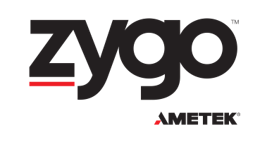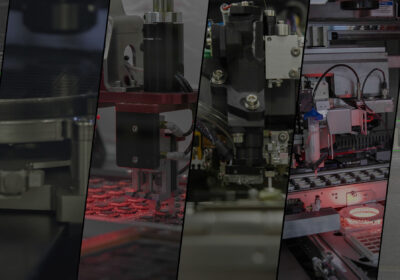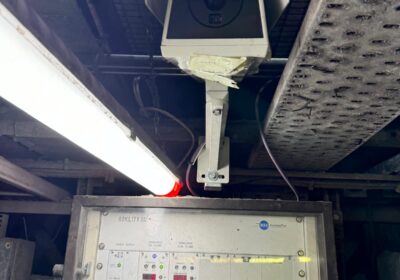Neil Curtis, DVP Sales, Marketing, and Service, Zygo Corporation
In this article, I take some time to discuss the topic of women in engineering with some successful women that have and are excelling in engineering related roles: Jennifer Helberg, Division Vice President (DVP), Business Unit Manager, at Zygo; Karen Nyberg an engineer, retired astronaut, and Zygo brand ambassador who, in 2008, became the 50th woman to travel to space as a Mission Specialist on Space Shuttle Discovery, STS-124; and Sara Moein and Lisa Zhang, Optical Systems Engineer and Application Engineer respectively at Zygo.
THE IMPORTANCE OF WOMEN IN ENGINEERING
The topic of women in engineering is of paramount importance today because diversifying the engineering field ensures a broader range of perspectives, fostering innovation and better solutions to complex challenges. Historically under-represented, women bring unique experiences and ideas that enrich the discipline. Additionally, promoting gender equity in engineering not only corrects longstanding systemic biases but also expands the talent pool, optimizing the potential for breakthroughs in the field. As our world becomes more interconnected and reliant on technological advances, it’s imperative that the engineers shaping our future reflect the diverse populations they serve.
While maternal roles and responsibilities can influence career choices and progression for some women, attributing women’s under-representation in engineering or senior roles primarily to maternal duties oversimplifies a complex issue. Many women without child-rearing responsibilities still face barriers, including systemic biases, stereotypes, and a lack of mentorship or opportunities. Additionally, societal expectations often place a disproportionate burden of household and caregiving tasks on women, irrespective of their professional aspirations. While motherhood can be a factor, it’s only one of many intertwining elements that contribute to the broader challenge of gender disparity in the workplace in general.
Historically and currently, women’s under-representation in engineering can be attributed to a confluence of societal, cultural, and institutional factors. Deep-rooted stereotypes have often pigeonholed women into certain roles, deeming technical fields as “masculine” and discouraging women from pursuing such careers. Educational systems and workplaces, at times, have perpetuated these biases, either subtly or overtly, through limited access to resources, opportunities, or mentorship for women. Additionally, the lack of visible female role models in the field and challenges in balancing work-life dynamics can deter women from entering or persisting in engineering. As a result, these systemic barriers have historically side-lined a significant portion of potential talent.
GENDER DIVERSITY
Let’s look at why attracting women into engineering roles and gender diversity in engineering teams is so important.
Gender diversity introduces a variety of perspectives, experiences, and creative approaches to problem-solving, enriching the brainstorming process. Engineering, at its core, is about designing solutions, and a diverse team can offer a broad spectrum of ideas, leading to more innovative and comprehensive solutions. By combining the experiences of all genders, engineering teams can tap into a richer pool of creativity and insights, which often results in out-of-the-box thinking and enhanced product designs.
Engineering products and solutions are used by a diverse global population. When engineering teams reflect the demographics of the end users, it ensures that the designed solutions cater to a wider audience’s needs and are more universally adaptable. For instance, safety equipment designed only by men might not account for women’s specific requirements, leading to potential usability or safety concerns. Gender diversity ensures that products and systems are more inclusive and effective for all users.
In addition, a diverse team often leads to improved group dynamics and collaboration. Studies have shown that companies with gender-diverse teams often outperform their counterparts in terms of productivity, profitability, and employee satisfaction. The mix of masculine and feminine approaches can lead to better decision-making and overall team synergy. A balanced team, where all voices are valued, fosters a positive working environment and boosts morale.
By actively promoting gender diversity, engineering firms can access a wider talent pool. Limiting opportunities based on gender means missing out on a significant portion of potential top-tier talent. In the global marketplace, where competition is fierce, having the best minds — regardless of gender — is crucial for success. Additionally, companies that prioritize diversity are often seen as more progressive, making them more attractive to potential employees and partners, and further enhancing their talent draw and competitive edge.
GENDER DIVERSITY IN ENGINEERING & LEADERSHIP ROLES
When it comes to women in engineering and leadership positions, we need to nail down tangibly why it is so important.

Jennifer Hellberg
Jennifer Helberg puts things quite succinctly. “Well, I’m a woman, and why wouldn’t someone want me? Joking aside, in general, companies struggle to find talent, and if you make it harder for women to progress, you are turning your back on half the population and so making this talent hunt even harder. Also, at Zygo, in common with many companies, our customer base is extremely diverse, and we need to interact, engage, and connect with them in the best way possible. Having women in a male dominated environment means we inject different nuances of engagement than our male counterparts, which can only be beneficial for team and business success.”
One of the keys to attracting women to engineering roles is for them to identify themselves as having a place in that environment, and so being able to see women in influential positions is fundamental.
Karen Nyberg picks up this topic. “Many women and girls have mentioned that I am an inspiration to them, someone from a small town succeeding in being an astronaut which is something very few women have done. But what is unfortunate is that I started my journey as an astronaut 30 years ago, and not that much seems to have changed. In mechanical engineering, university undergraduates today are still 90% men. Role models need to be in place to break this bias, and to help women shine when they eventually enter the engineering workforce.”
A conversation with Sara Moein, Optical Systems Engineer at Zygo shows how she struggled with and overcame such bias, “When I started my doctorate degree in optical engineering in the US, I was very aware of the fact that I was in a male dominated discipline, and that the ratio of female to male classmates and professors was still very low. From the standpoint of a female engineer, this meant that I had very few female role models around me to look up to, and that people made assumptions about my professional path and choices based on my gender. To overcome these challenges, I reached out to the very few female classmates and professors and made a small community in which we could freely discuss the challenges and learn from each other’s experiences. I also became member of professional societies and reached out to them to use their resources, such as invited talks and online workshops, to educate myself and my classmates and professors (male and female) about these issues and how to face them.”
Hellberg elaborates, “Beyond the under-representation and need to overcome workplace challenges mentioned by Sara, what I see is that in many instances, women are not being impeded from entering high powered engineering jobs or leadership positions, but rather they are self-selecting out as they consider the sacrifices and balancing them with traditional family roles. Men make the same sacrifices, but I feel that on a level, we really do begin to boil this whole subject down to genetic wiring and nurture versus nature. People and indeed company policy have entrenched positions when it comes to gender specific family roles.”

Karen Nyberg in International Space Station
When talking about this topic, it seems to me that Hellberg nails it. Fundamentally, if companies want to attract more women, and truly embrace gender diversity, they have to understand the dynamic of family life which is so important to all, and be more understanding and welcoming to people (male or female) who want a family.
Moein identifies other areas where companies can level the playing field. “Companies can encourage young women to pursue roles in engineering by providing them with opportunities to advance their professional career. This could include facilitating hiring more qualified female engineers and scientists, providing equal pay and opportunities for professional growth, and encouraging women to take leadership positions. I have noticed that companies, including Zygo, are celebrating diversity more. I believe that putting a spotlight on female engineers and scientists is one of the key components in letting others know that the engineering field is evolving and moving towards a more diverse and welcoming field.”
The upside of having true gender diversity is too great to not try and even the playing field on such matters. Nyberg again adds an insightful and clear expression of why. “It’s all about diversity of thought and diversity of background. Forget about there’s a man, and there’s a woman. If teams are diverse, they pool different experiences and bring together different aptitudes, and this makes a HUGE difference to outcomes.”
Hellberg agrees, “One of the things in business that is important is risk management. Stereotypically women are more risk averse than men, it is in their DNA. Too often, however, I think we feel we have to bang the drum for equality by saying there are no differences between men and women, but the reality is that there are, and we need to embrace and leverage these differences. When it comes to risk, a balance of risk aversion and risk tolerance, for example, is healthy.”
ENCOURAGING INTEREST & PASSION
At the root of everything when it comes to helping people make positive career choices is to recognise a passion and encourage that passion. Engineering is such a huge field, and some engineering roles may on the face of it seems to be male dominated. But the key is to approach this from a different angle.
Nyberg picks up this point. “Addressing the under-representation of women in engineering roles requires a nuanced approach beyond just encouraging more women to pursue engineering. Recognizing and tapping into an individual’s innate passions can be a game-changer. If we can illustrate to women how engineering can be a tool to realize their passions, whether it’s in environmental conservation, healthcare, art, or any other field, it becomes a means to an end they care deeply about. By connecting the dots between what a woman is genuinely passionate about and how engineering can be the pathway to achieve that, we shift the narrative. It becomes less about fitting into a male-dominated field and more about harnessing engineering as a powerful enabler to fulfil personal and professional aspirations.”
Once ignited, and once involved in a career in engineering, the motivations are the same for men and women. There is a wonder about science which informs so much in our everyday lives.
This is beautifully encapsulated by Lisa Zhang, Application Engineer at Zygo. “When you work in the engineering industry, you will be exposed to many creative inventions and discoveries and have a chance to understand many production processes. Sometimes this can give you a deeper understanding of things you see in life and can be a spur for sparking a woman’s interest in things as well as a man’s. Taking the appearance of some brand-new car lights as an example, they are brighter and cooler recently, which is because of an improvement in the processing technology of the lights and the molds. To ensure that the manufacturing of the lights conforms to the design, high-end instruments are needed to do quality control, and many manufacturers use Zygo’s optical profilers for this. I am excited that when I look at a new headlight array, I understand why the lights look so great, and that I am part of the reason why.”
SUMMARY
This article has delved into the significance of gender diversity in engineering, emphasizing the valuable perspectives women bring to the field. All participants have highlighted the challenges and barriers faced by women in a male-dominated sector. Historical and societal biases have often side-lined women, but I think we have underscored the importance of diverse teams, especially in engineering. Such teams foster innovative thinking, cater to a broader audience, and improve group dynamics improving outcomes. The importance of role models and the necessity of addressing systemic issues to genuinely attract and retain more women in the profession are key, allowing the benefits of true gender diversity in terms of varied experiences and perspectives to be realized.









